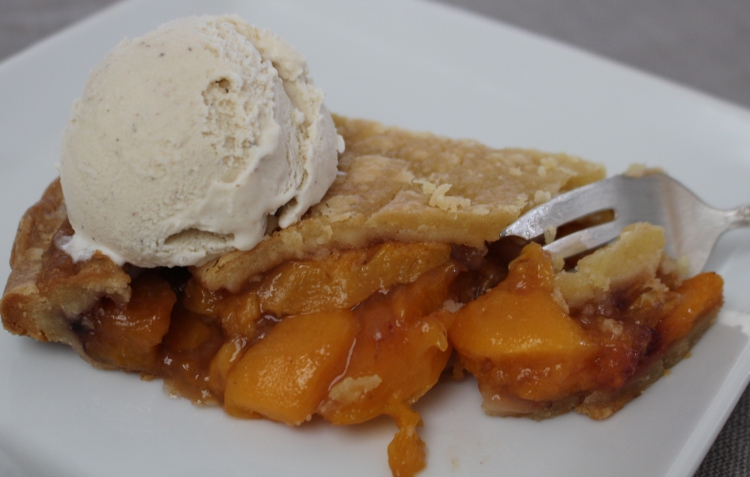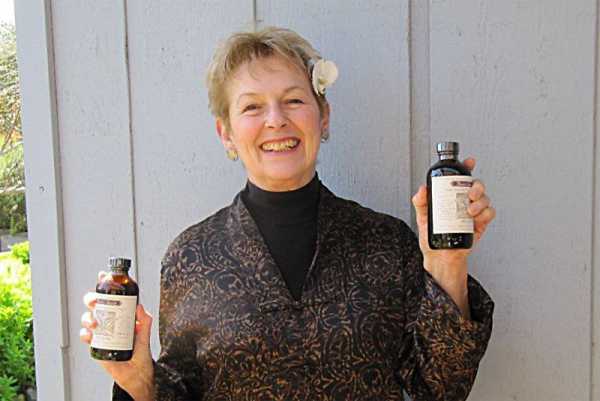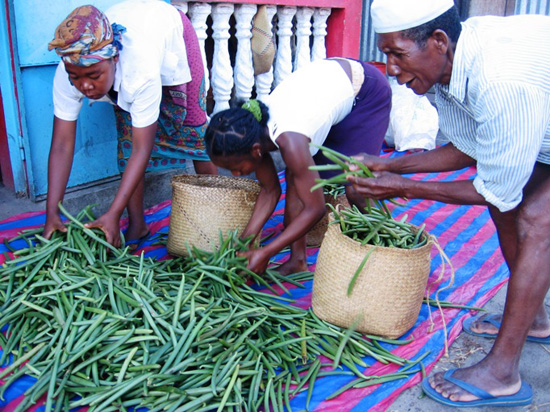
I'm amazed at how superior your vanilla is!
– Des, The Grommet
 By Carole Bloom: Author of Bite-Size Desserts and The Essential Baker: www.carolebloom.com
By Carole Bloom: Author of Bite-Size Desserts and The Essential Baker: www.carolebloom.com
I truly love chocolate and I especially like high cacao percentage chocolate. Currently I’m working on a book on this subject to be published by Wiley in 2010. We are all seeing the labels on chocolate bars, and even on restaurant dessert menus, that give the cacao percentage, like 70% or 85% or even more. What does all this mean and how does it relate to semisweet, bittersweet, and all of those other terms we hear?
First I should say that different people have different preferences when it comes to chocolate. Some like milk chocolate, some like darker chocolates, others are crazy about white chocolate. Lucky for us that there are so many chocolates to choose from. So what is meant by cacao percentages or cocoa content?
Cacao percentage is the actual percentage of the components of the cacao bean that are in chocolate. This consists of three elements: chocolate liquor, also called cocoa mass or paste; cocoa butter, the natural fat present in the cacao bean; and cacao solids, the bits of the cacao bean that are ground to a powder. After the cacao percentage, the remaining components of the chocolate are sugar, a bit (1%) of lecithin, and often vanilla.
The amount of the cacao percentage (chocolate liquor, cocoa butter, and cacao solids) is arrived at differently by different chocolate companies, which is one of the reasons why chocolate with the same cacao percentage tastes different. There are, of course, other factors that go into making chocolate such as the type of cacao beans, where they are from, how they are fermented and roasted, and whether or not they are blended, to name a few.
The percent of cacao content that is most commonly found in the grocery store ranges between 50% and 60%. But because of the growing trend for higher cacao percentages it’s not hard to find chocolates with higher cacao percentages, such as 60%, 62%, 64%, 66%, and 70%.
So how do the terms semisweet, bittersweet, extra-bittersweet, and extra dark relate to cacao percentages? Keep in mind that the higher the cacao percentage, the less the amount of sugar. This, of course, means that the higher percentages have a more intense chocolate flavor. Because different chocolate manufacturers label their chocolates differently it’s hard to pinpoint exactly the cacao percentage of semisweet, bittersweet, and extra-bittersweet. And, I should add that the FDA standards are outdated, which say that semisweet and bittersweet chocolate require only a minimum of 35% cacao. I put semisweet chocolate in the range of 50% to 62%, bittersweet in the range of 63% to 72%, extra-bittersweet in the range of 73% to 85%, and above that would be what I would call extra-dark. And it is possible to find chocolate that is 100%, which means it is completely unsweetened.
Milk chocolate is on board with cacao percentage also. There is a relatively new category of Dark Milk Chocolate, which is milk chocolate with a higher than normal cacao percentage. These chocolates usually range between 38% and 42%. Normal milk chocolate can have as little as 10% cacao percentage. The other ingredients in milk chocolate are milk solids or powder, sugar, lecithin, and vanilla.
White chocolate is made with cocoa butter, sugar, milk solids or powder, and vanilla. It is much lighter in color than milk or dark chocolate because it contains no cocoa powder or chocolate liquor. The important thing here is that it is made with real cocoa butter, not some other imitation fat, which tastes nothing like chocolate. Real white chocolate will have a cacao percentage (from the cocoa butter) in the range of 38% to 41%.
When baking with high cacao percentage chocolate there are a few things you need to consider. First, I recommend that you experiment some with these higher cacao content chocolates. Keep in mind that chocolate will not change in flavor when you bake or make confections with it, so if you like it plain, that’s the chocolate you should use. High cacao percentage chocolate has more dry ingredients in it than lower cacao percentage chocolates, so it will act a bit differently in baked goods. Many recipes are now being written using these new chocolates, such as in my next book. Note that substituting high cacao percentage chocolate in a recipe that you have made for many years may not work well. If you try this, use a bit less chocolate (an ounce or so) or add more butter, eggs, and other liquid ingredients to balance it out. This takes some trial and error.
Let me briefly summarize here. The higher the cacao percentage, the less the amount of sugar and the more intense the chocolate flavor will be. I personally like to use bittersweet and extra-bittersweet in my recipes. You can find higher cacao percentage milk chocolate, known as Dark Milk Chocolate with 38% to 42%. When baking or making candy with high cacao percentage chocolate it may require some trial unless the recipe is written for a particular percentage. Remember to taste the chocolate plain first.
When people ask me what’s new with chocolate I always answer, “Have you tried some of the higher cacao percentage chocolates?” They usually say, “no.” That’s my opening to encourage them to move to the next level with chocolate.
I was given a small bottle of Rain’s Choice in a gift basket and I have been hooked ever since. The flavor makes all of my baking so much better! I will never use grocery store vanilla again!


© 2021. All Rights Reserved
Designed/Developed by Kat & Mouse